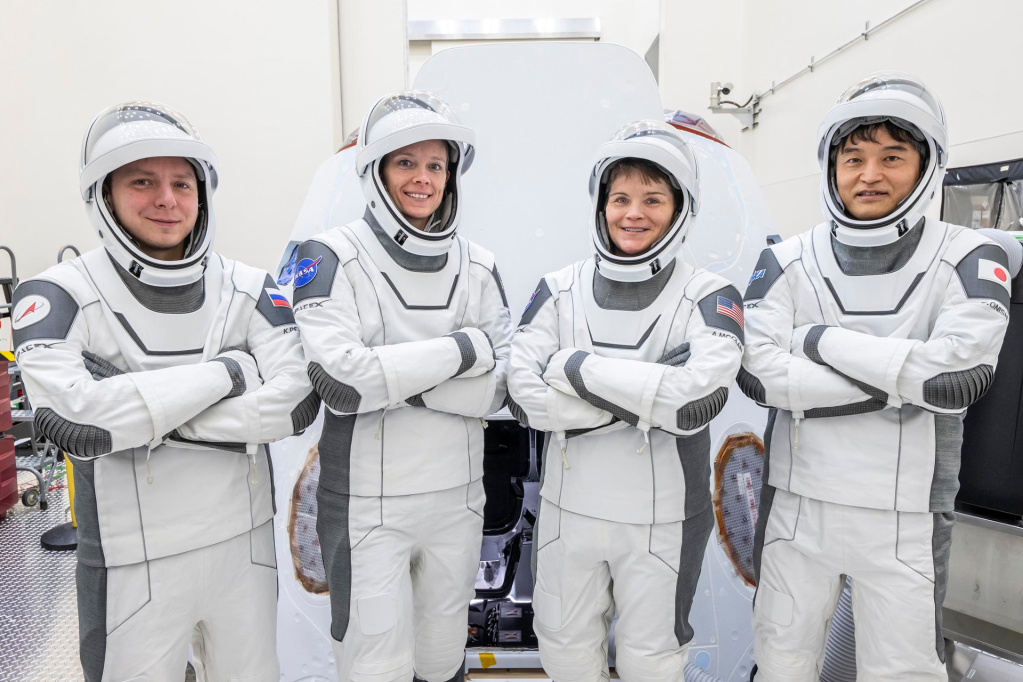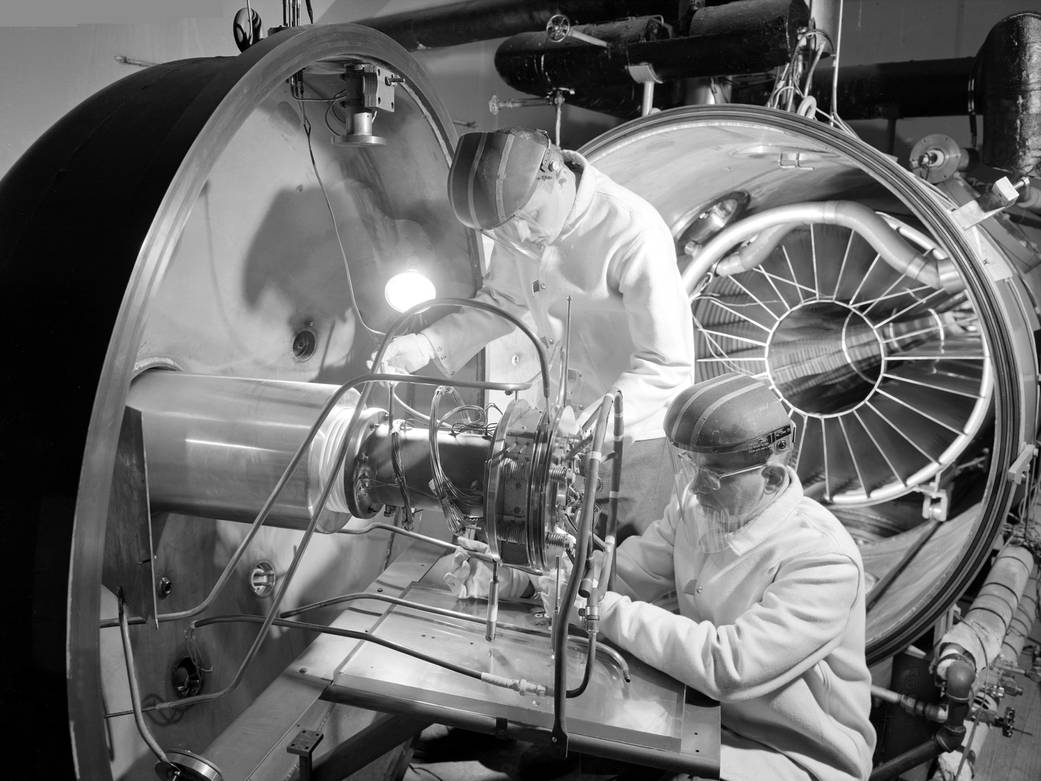Technicians are installing ion engine #1 in the High Vacuum Tank in the Electric Propulsion Research Building in this image from 1959. This facility is located at the Lewis Research Center, now the John H. Glenn Research Center in Cleveland, Ohio. The engine is a predecessor of the power system that sent Deep Space 1, the first of NASA’s New Millennium Program missions, which tested 12 advanced technologies and instruments in space. The craft was launched in October 1998. NASA sent the final commands to its Deep Space 1 spacecraft on Tuesday, Dec. 18, 2001.
NASA’s Glenn Research Center is a world leader in the field of ion propulsion. Today’s chemical propulsion systems get their big boost and then coast at constant speed until the next boost. But, an ion engine can produce continuous thrust, thereby providing near constant acceleration and shorter travel times. Ion propulsion is also ten times more fuel efficient than chemical onboard propulsion systems. This greater efficiency means less propellant is needed for a mission. Spacecraft can then be smaller and lighter, with lower launch costs.Image Credit: NASA
1 min read


























